Straddling the line between faith and superstition, the evil eye bracelet's place in religious beliefs might just surprise you.
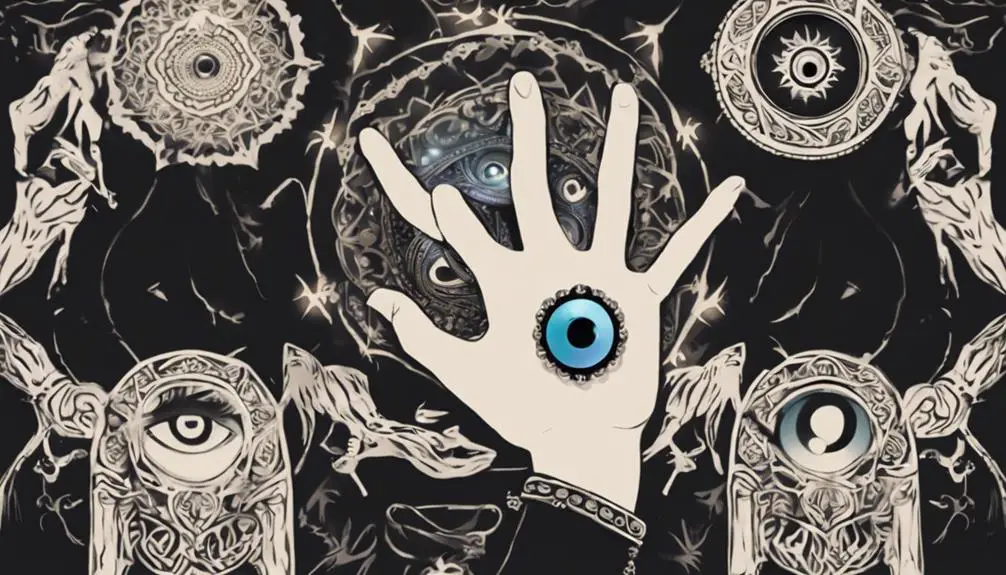
Is an Evil Eye Bracelet a Sin?
In navigating the waters of cultural beliefs and practices, you might find yourself at the crossroads of tradition and faith, especially when it comes to accessories like the evil eye bracelet.
This piece isn't just a fashion statement; its roots run deep in history and spirituality, sparking a debate on its place within religious beliefs.
As you explore this topic, consider how perceptions of protection and superstition intertwine and what this means for the line between cultural appreciation and spiritual sin.
The journey through understanding the evil eye's significance might just challenge your views on where faith ends and superstition begins.
Key Takeaways
- The sinfulness of wearing an evil eye bracelet depends on one's intent and cultural understanding.
- Different religions and cultures offer varied interpretations of the evil eye's symbolism.
- Educating oneself on the bracelet's significance can prevent issues of cultural appropriation.
- Approaching the symbol with respect and sensitivity is key, regardless of personal belief.
Understanding the Evil Eye
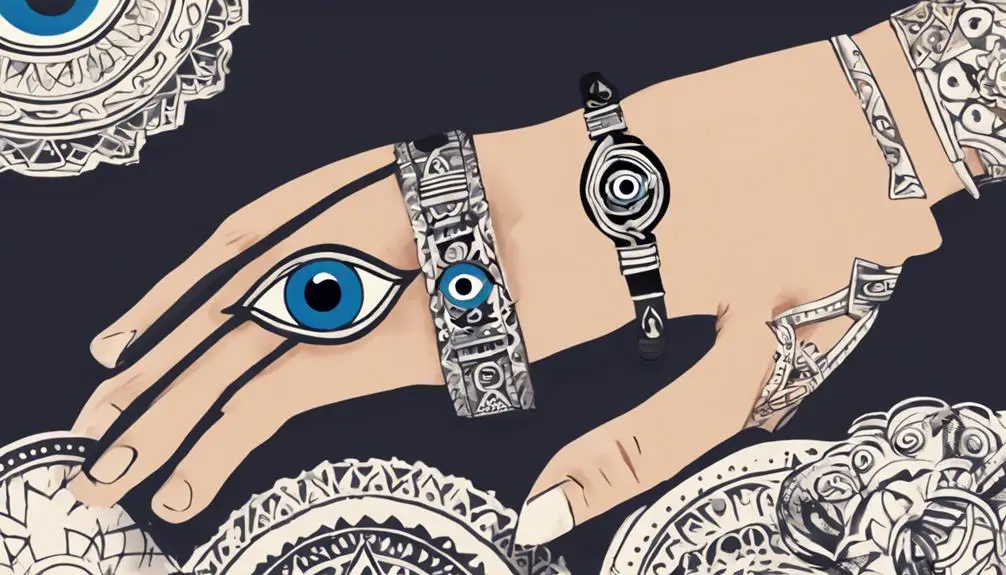
Throughout history, many cultures have believed in the malevolent power of the evil eye, attributing misfortune and illness to its sinister gaze. The origins of this superstition are as diverse as they're ancient, rooted deeply in the human tendency to explain the unexplainable through mystical means. Superstition origins trace back to civilizations such as the Greeks, Romans, and Egyptians, who all held the belief that envy and excessive praise could manifest as a curse, bringing about the victim's downfall.
Protection methods against the evil eye are as varied as the cultures that fear it. Amulets, charms, and talismans are commonly used, with some of the most recognizable being the nazar—a blue and white eye-shaped symbol. The concept behind these objects isn't only to shield the wearer from harm but also to deflect the negative energy back to its source.
Analyzing these practices, you're delving into a complex web of belief systems that underscore the human desire for control and understanding in a world filled with uncertainties. The evil eye, then, serves as a testament to the lengths to which cultures will go to protect themselves from the unseen forces they perceive to be at play.
Historical Significance
Exploring the historical significance of the evil eye reveals how deeply embedded this belief is in various cultural narratives, shaping practices and perspectives across centuries. You'll find that ancient artifacts serve as tangible evidence of the evil eye's pervasive influence. These artifacts, ranging from amulets to pottery, often feature eye-like symbols designed to ward off harm. The origins of these symbols trace back to ancient civilizations in the Mediterranean and Near East, where people believed that a malevolent gaze could bring about misfortune or injury.
The symbol's origins aren't merely decorative; they carry profound meanings related to protection, power, and defiance against malevolence. As you delve into the historical context, you'll discover that the evil eye motif wasn't confined to a single culture or era. Instead, it crossed geographical boundaries and was adopted by various societies, each infusing the symbol with its unique interpretation and significance. This widespread adoption underscores the human desire for protection against unseen forces and the shared belief in the power of symbols to affect the material world.
Through ancient artifacts, the enduring legacy of the evil eye symbol becomes clear, illustrating its role in human history as a guardian against adversity.
Religious Perspectives
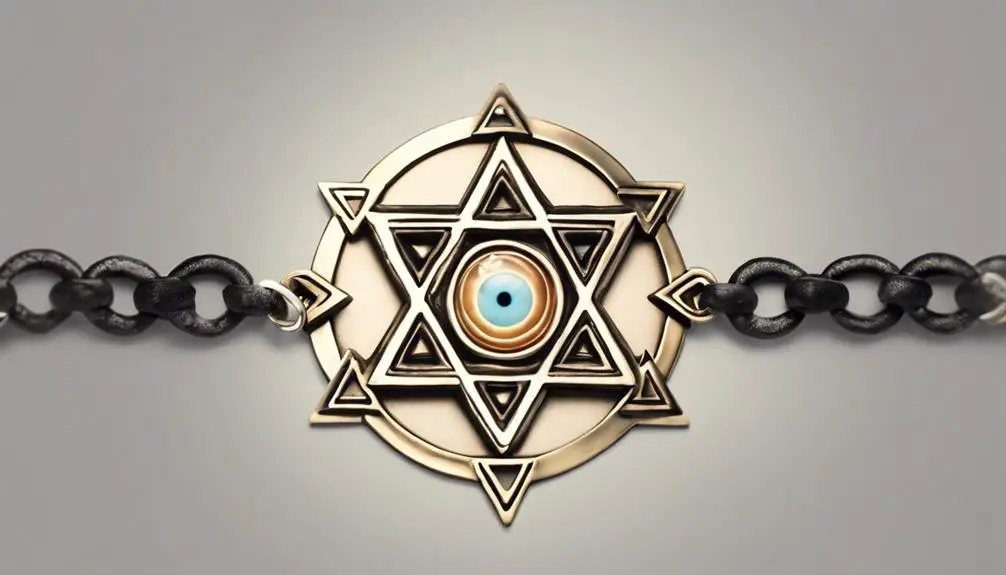
Religious traditions around the world offer varied interpretations of the evil eye, reflecting a rich tapestry of beliefs regarding its significance and the means of protection against it. The moral debate surrounding the use of an evil eye bracelet hinges on the interpretation of its symbolism within different religious contexts. For some, wearing such an amulet is seen as a form of protection endorsed by cultural traditions, with no contradiction to their spiritual beliefs. Others, however, view the reliance on a physical object for protection as a challenge to the supremacy of divine protection, sparking intense discussion about where faith should be placed.
The symbolism interpretation plays a crucial role in shaping the perspective of religious communities on this matter. In religions where symbolic representations are integral to practice and belief, the evil eye bracelet might be embraced as a legitimate form of safeguarding one's spiritual well-being. Conversely, in traditions that emphasize direct divine protection and the avoidance of physical amulets, such an accessory could be seen as undermining one's faith in the divine.
This divergence in views underscores the complexity of religious perspectives on the evil eye bracelet, highlighting the nuanced ways in which different faiths navigate the intersections of tradition, belief, and the moral implications of using protective symbols.
Cultural Considerations
In analyzing the evil eye bracelet's role, it's crucial to consider the diverse cultural backgrounds that shape its perception and use. The concept of the evil eye varies significantly across different societies, making it a rich subject of global symbolism. This amulet, which is intended to ward off the malevolent gaze believed to bring bad luck, has roots in numerous cultures, each adding its layer of meaning and significance.
Your understanding of the evil eye bracelet is deeply influenced by these cultural nuances. For instance, in some regions, it's seen as a protective talisman passed down through generations, embodying centuries of tradition and belief. In others, its adoption is more a fashion statement than a testament to personal beliefs.
Moreover, the intersection between cultural heritage and personal beliefs plays a pivotal role in how the evil eye bracelet is perceived. For you, wearing it might be an expression of cultural identity or a personal form of spiritual protection. This duality underscores the importance of respecting the plurality of interpretations and the subjective nature of its significance.
Thus, when considering whether the evil eye bracelet is a sin, it's essential to acknowledge the mosaic of cultural beliefs that influence its acceptance or rejection.
Ethical Implications
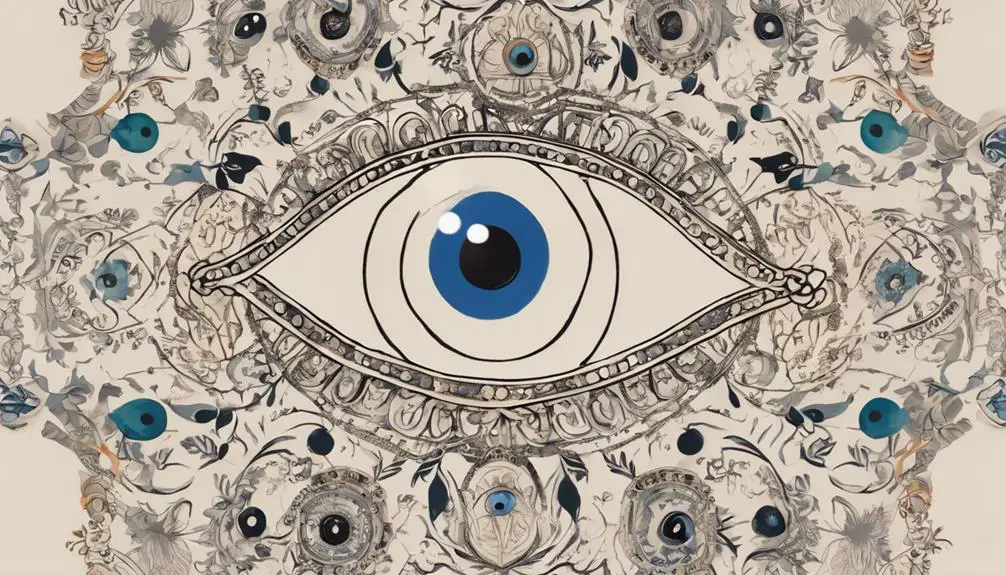
The ethical implications of wearing an evil eye bracelet stretch beyond personal belief, touching on issues of cultural appropriation and authenticity. You're confronted with the moral ambiguity surrounding its use, especially when it's worn without understanding or respecting its cultural significance. This scenario raises questions about the integrity of adopting symbols from cultures not your own, especially when these symbols are commercialized or stripped of their original meaning.
Furthermore, the sin classification of wearing an evil eye bracelet isn't straightforward. It hinges on intent and awareness. If you wear it as a fashion statement, detached from its cultural and spiritual roots, you might inadvertently disrespect the cultures that hold the symbol sacred. On the other hand, if your intention is to honor and understand the symbolism behind it, the ethical dilemma becomes less clear-cut.
Thus, it's crucial to approach the use of such symbols with sensitivity and respect towards their origins. Engaging with them responsibly involves educating yourself about their history and significance. This careful consideration can help navigate the complexities of cultural exchange and ensure that your actions don't inadvertently perpetuate cultural insensitivity or appropriation.
Frequently Asked Questions
Can Wearing an Evil Eye Bracelet Improve My Personal Relationships or Social Interactions?
Wearing an evil eye bracelet might not directly improve your relationships or social interactions. It's key to consider if it's cultural appropriation or just following fashion trends. Analyze motives and impacts carefully.
Are There Specific Materials or Colors for an Evil Eye Bracelet That Are Considered More Effective or Powerful?
Yes, the effectiveness of an evil eye bracelet can vary based on material significance and color symbolism. Certain materials and hues are believed to hold more power, enhancing the bracelet's protective qualities for you.
How Does the Belief in the Evil Eye and Its Countermeasures Like the Bracelet Vary Between Different Age Groups or Generations?
Generational beliefs and cultural acceptance play key roles in how age groups view the evil eye and its bracelets. You'll find younger generations might be more skeptical, while older ones often hold these traditions dear.
Is There Any Scientific Evidence or Psychological Studies That Support the Effectiveness of Wearing an Evil Eye Bracelet?
There's no scientific evidence supporting the effectiveness of an evil eye bracelet. Its perceived benefits may stem from the placebo effect, while concerns of cultural appropriation highlight the need for sensitivity in adopting such practices.
How Do People With No Religious or Cultural Affiliation to the Concept of the Evil Eye View or Interpret the Use of Evil Eye Bracelets?
You might see evil eye bracelets as a fashion statement or worry about cultural appropriation. Without any religious or cultural ties, you'll likely analyze their use more for aesthetic appeal than any supposed protective powers.
Conclusion
In concluding, you've explored the multifaceted nature of the evil eye bracelet, spanning its historical roots, religious interpretations, and cultural significance.
Considering these aspects reveals that labeling it as a sin isn't straightforward. It's crucial to understand the intentions behind its use and the beliefs of the individual wearing it. Ethically, respecting diverse perspectives and practices is key.
Ultimately, whether it's viewed as a sin depends on one's personal beliefs and cultural background, highlighting the importance of context in ethical evaluations.


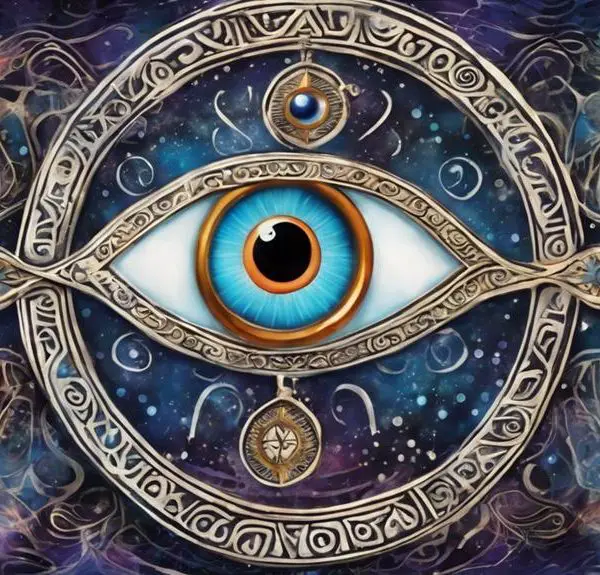
Sign up